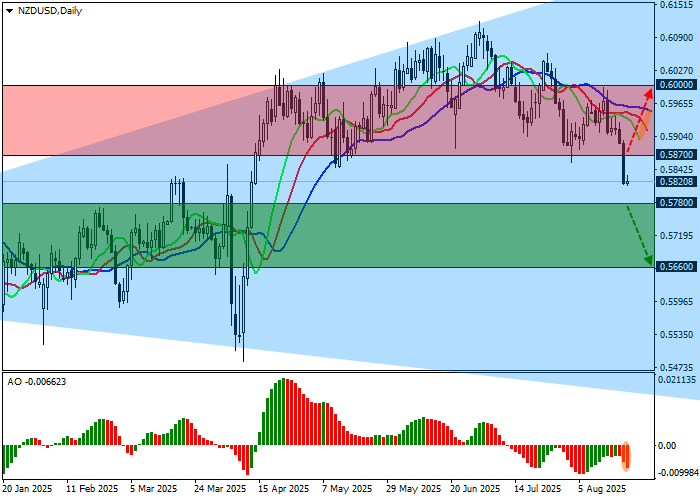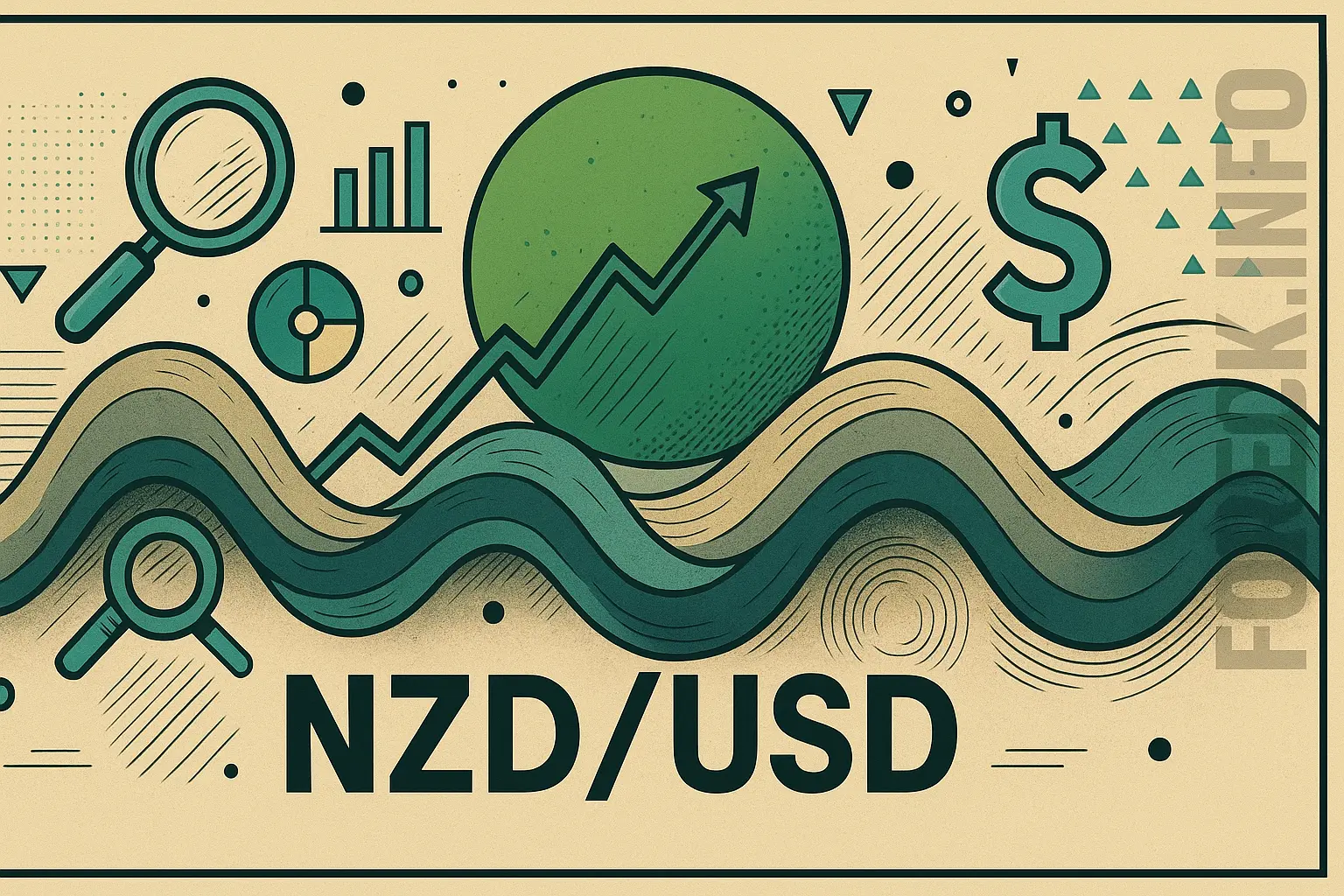RBNZ Governor Christian Hawkesby highlighted that ongoing uncertainty around U.S. tariff policy is weighing on business confidence and consumer sentiment. Import tariffs on New Zealand have been set at 15%, slightly higher than the previously signaled 10% but still below the levels imposed on other U.S. trading partners. Hawkesby warned that the bigger risk comes from weakening global demand, which could pressure New Zealand’s export-driven economy. Analysts expect borrowing costs to slide further to 2.50% by year-end, while labor market and manufacturing conditions are unlikely to show strong improvement.
Trade data from July added to the cautious tone: the trade balance deficit widened by NZD 578 million, with exports at NZD 6.71 billion, while imports rose from NZD 6.33 billion to NZD 7.28 billion.
On the U.S. side, the dollar index (USDX) holds near 98.10. Political pressure on the Fed has intensified again, as President Donald Trump criticized Board member Lisa Cook for allegedly restricting mortgage lending to Republican states and demanded her resignation. Markets are now focused on the Jackson Hole Symposium, where Fed Chair Jerome Powell will speak tomorrow at 16:00 (GMT+2). According to the CME FedWatch Tool, the probability of a 25bp cut in September has eased from 92.0% to 82.4%, though expectations remain elevated.
Support and resistance
The pair is pulling back from the resistance line of a broadening formation pattern, with dynamic boundaries between 0.6200–0.5400.
- Resistance levels: 0.5870, 0.6000
- Support levels: 0.5780, 0.5660
Technical indicators are strengthening the bearish case: fast EMAs on the Alligator indicator are diverging from the signal line, while the AO histogram remains in negative territory, forming corrective red bars.

Trading scenarios
Base scenario: Short positions may be considered after a breakout below 0.5780, targeting 0.5660, with a stop-loss at 0.5830. Timeframe: one week or more.
Alternative scenario: If the pair consolidates above 0.5870, long positions toward 0.6000 come into play, with a stop-loss at 0.5800.

